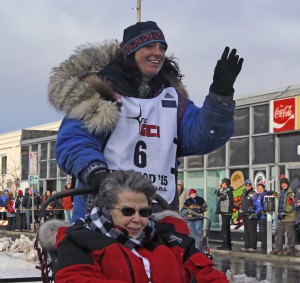Iditarod teams that reach the coast at Unalakleet will run into a fierce windstorm and blowing snow.
Michelle Phillips says she’s not surprised but she also isn’t too worried about her dog team.

“It’s the coast,” she said. “It just throws everything it can at you and that’s why maybe a dog team that’s had a little more rest may be better at this point in the game.”
Phillips gave her teams extra rest in Kaltag before they jumped on a portage trail and followed a river out to the coastal community of Unalakleet.
Rookie Thomas Waerner agrees that rest at this point in the race is crucial to maintaining speed in a dog team
“I think a lot of people have been pushing pretty hard all the way from Galena,” Waerner said. “So, if you have a team that is a little more rested – not much more, but a little more, than maybe it will be an advantage.”
The temperature is also forecast to rise to slightly above zero. Peter Kaiser says warmer weather comes as a welcome change, since mushers haven’t seen a day above zero in a week.
“I think the dogs will do better in the heat,” Kaiser said. “It will help loosen up…. more glide because the 50 below at night stuff has been kind of like trying push your sled through beach sand.”
Either way, Kaiser says there is not much he can do aside from drive his dog team to Nome.
“We’ll just take it as it comes,” he said. “We can’t go backwards, we can only go towards Nome, I guess we’ll go right through the middle of it.”
Snow accumulation along the coast of up to two inches could slow teams. A fierce, biting wind is likely to cause heavy drifting along the trail, or scour the ice free of snow in others as teams tackle the final 250 miles of trail.




